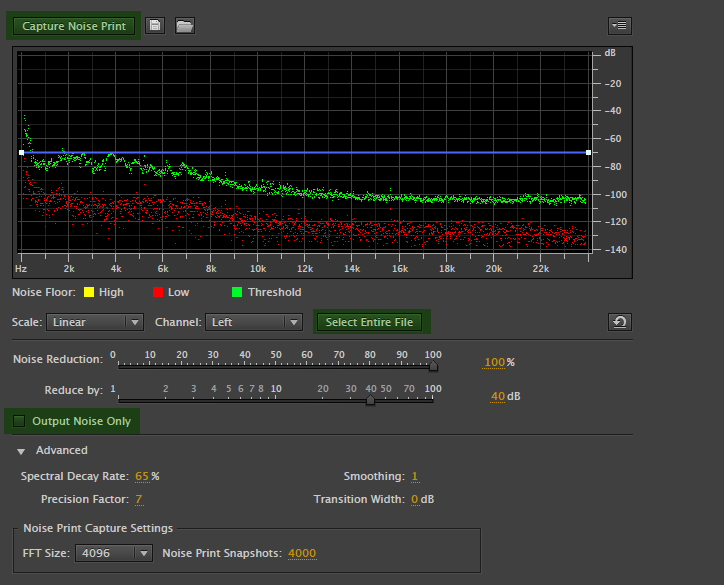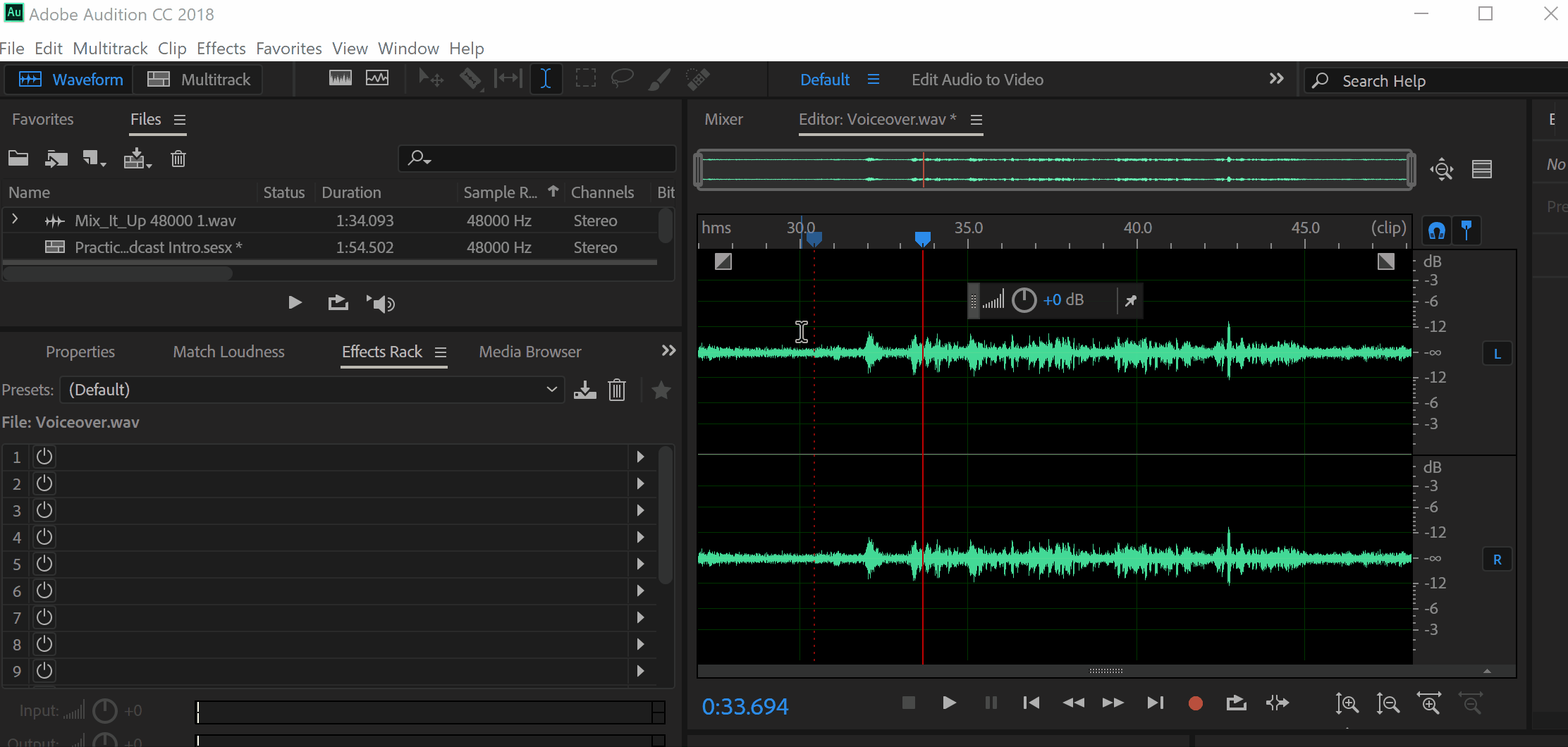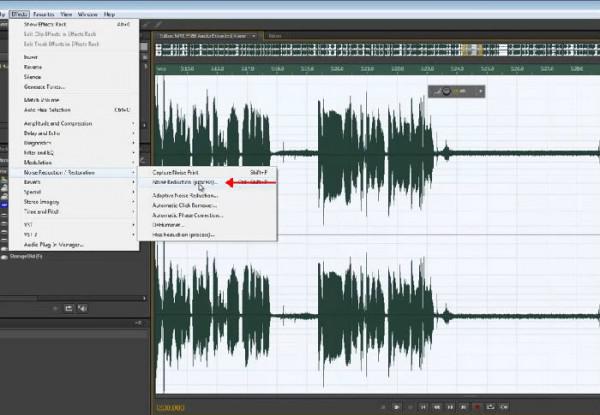
Great, we're ready to continue in Premiere Pro. I wanted to go to New York, but you know, all the construction. Command + S on MAC, or Control + S on Windows, and toggle back to Premiere Pro. Now remember, we're working on the original media file. When I saw it, I wanted to go to New York. Let me zoom out a little and find a bigger gap. This takes me into a comprehensive interface where I can selectively remove unwanted noise. Now I'm going to deselect, I'm gona go back into Effects, noise reduction and restoration, and I'm going to choose noise reduction. So, I'm going to select this section of the wave form and under Effects, noise reduction and restoration, I'm going to choose capture noise print. It looks to me like we've got some low hum here.
Capture noise print audition plus#
Now if I zoom in, I'm pressing the plus key here on my keyboard. And then, I'm going to press backspace or delete. So, with this Marquee tool selected by default, I'm going to lasso to select all of those high frequencies. Much higher than will matter for our dialogue.

Well, it's pretty clear we've got some kind of radio mic interference going on in the high frequencies. So dots at the top are high tone and dots at the bottom as low tone. Vertical axis here indicates frequency, not amplitude. But now, the blackness of the dots indicates the amplitudes at different frequencies. Time still moves from left to right, I've got two channels, left and right. And up at the top, I've got show spectral frequency display and this gives me a visual indication of what's going on with my audio.

Over in Audition, I got away from representing this voiceover.
Capture noise print audition pro#
To avoid that clash of paradigms, Premiere Pro gives you a copy to work on automatically. But in audio editing, the traditional workflow is to modify the audio files that you're working on. Premiere Pro has to do this because the workflow in non-linear video editing post production means never modifying your original media files. And that's because when I sent the clip to Audition, Premiere Pro duplicated the media file and replaced the clip in the sequence with the duplicate. It's now got the words audio extracted added to the end of the name. This was called noisy journey to New York voiceover, or VO. Before we get into Audition, I just want to toggle back to Premiere Pro and draw your attention to the name of this clip. And even if you don't recognize the Audition interface, a lot of these tools will be familiar because Adobe standardized the tools across the applications some time ago.

I'm going to right-click and choose edit clip in Adobe Audition. First of all, let's send this voiceover to Audition. But I'm going to show you quick ways of doing it in Audition. You can fix both of these issues in Premiere Pro. My sequence goes on for probably another 20 or 30 seconds after the music finishes. Fantastic music that I want to use with this sequence but it's too short. The second issue is that I have some music here. First, let's listen to this voiceover, I'm going to solo the track and play a little. I'm in the add Audition sequence and I've got two audio issues here that we're going to resolve with Audition. And in this video, I'd like to show you two ways in particular. Adobe Audition integrates beautifully into your post-production workflow in Premiere Pro.


 0 kommentar(er)
0 kommentar(er)
